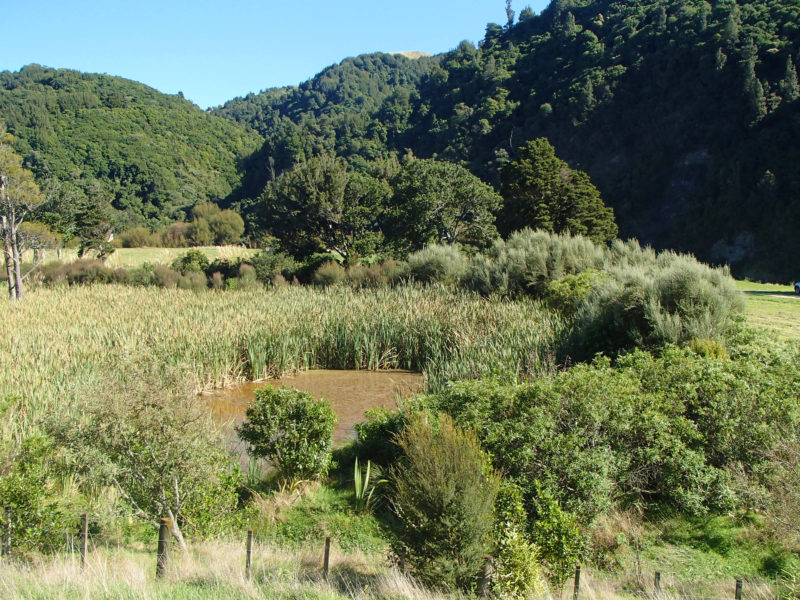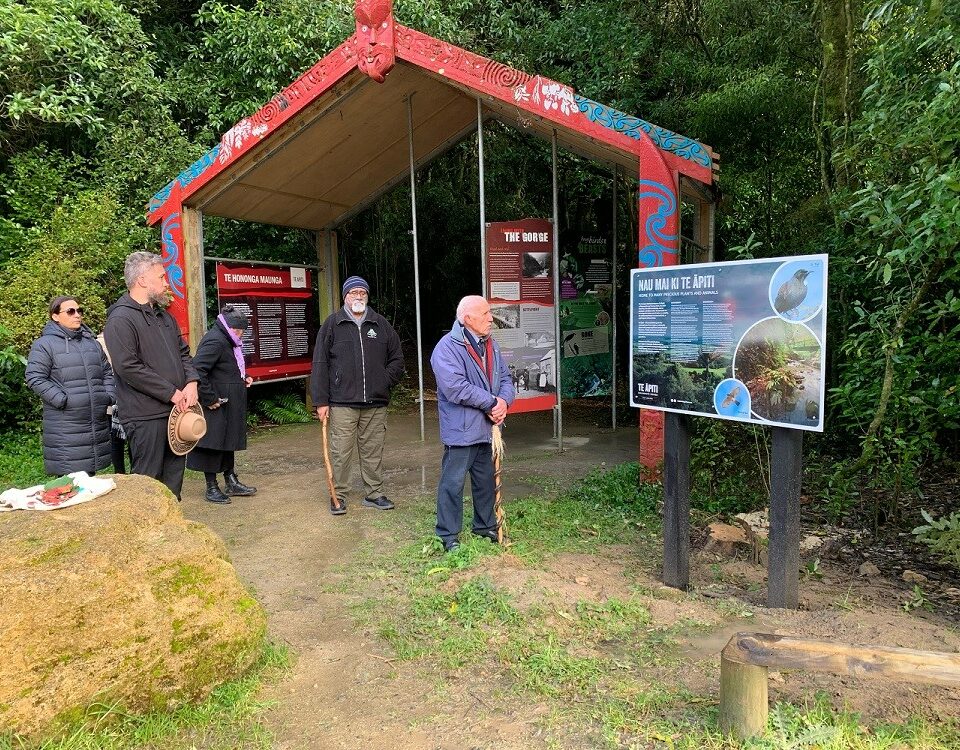
Ferry Reserve Wetland
Ferry Reserve is found on the eastern side of Te Āpiti – Manawatū Gorge, and its wetland is a symbolic reminder of the types of native habitat that once covered a large area stretching along the base of the Ruahine and Tararua Ranges.
Today, only 10 per cent of the pre-European wetland area across New Zealand remains. In the Horizons Region, only 3 per cent prevails. Horizons Regional Council aims to restore these significant habitats with research and monitoring, pest plant and pest animal control, funding assistance, and specific work programmes for wetland enhancement.
Amongst the many reasons as to why they are so important, wetlands play a big role in alleviating flooding by holding water, much like a sponge. By doing so, wetlands help to stabilise river levels, and filter and purify the surface water. Wetlands take in water during storms and whenever water levels are high. When water levels are low, wetlands slowly release water.
Ferry Reserve wetland is a complex and intricate system that includes a variety of habitats. The open pond area was created in 2006 for waterfowl habitat and the banks were planted with appropriate native species such as hebe, carex sedge, flax, and kowhai to stabilise and shelter the area. Great care was taken to ensure the wetland water level wasn’t affected. From the pond edge, the habitat grades to a swampy area full of raupō, ideal for waterfowl to nest in, giving them protection from predators. Water seeps through here slowly, undergoing a thorough filtering and nutrient conversion process before reaching the pond. From the raupō, the swamp forest begins.
This wetland was fenced in 2006 and since then it has flourished. Through community initiatives driven by Te Āpiti – Manawatū Gorge Governance Group, over 6,000 native saplings have been planted. The group includes neighbouring landowners, tangata whenua, local city and district councils, Horizons Regional Council and the Department of Conservation, who have worked alongside community groups.
As a result of planting initiatives, natural regeneration is occurring. This ensures the survival of the wetland over the long-term as young plants grow up to replace the ageing and dying trees as part of the natural process.
To further ensure the remnant is protected, pest plant and animal control is completed annually as part of Horizons’ biosecurity work programmes. Old man’s beard, possums and rats are the biggest threats.
Three of the main tree species you’ll see on your visit to the wetland are kahikatea, pukatea and swamp maire. Kahikatea are specialised to live in waterlogged soils with their supported root systems which allow them to stay upright on the soft soils. Pukatea are even better adapted to wetland life. Not only do they have the supported root system, they send up breathing roots (pneumatophores) above the surface of the swamp to take in air for their root systems. Swamp maire have pneumatophores too. The trees are covered with the long-leaved vine kiekie, and the black cane-like supplejack. In the drier areas surrounding the main wetland you’ll find common forest tree and shrub species such as titoki, lemonwood, cabbage tree, tawa and lacebark to name a few.
Wetlands are also home to 22 per cent of New Zealand’s bird species. The Ferry Reserve wetland is home to species such as pōpokatea (whitehead), kāhu (swamp harrier), kōtare (kingfisher), pūtangitangi (paradise shelduck), pīwakawaka (fantail), korimako (bellbird) and many more. In addition to wetland habitats being appreciated for their inherent natural value, wetlands also provide an important link in the history and culture of many hapū. The plants that grow in wetlands provided clothing, mats, and were a source of medicine, food, and dye. Wetland animals, particularly tuna (eels) were valuable foods.



